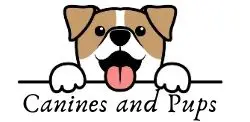If your dog has diarrhea and is drinking excessive amounts of water (also referred to as “quenching”), it may be a sign of an underlying issue.
We outline the causes of dog diarrhea and quenching, what these symptoms could mean, and when it’s time to seek veterinary help.
Table of Contents
Why Dog Diarrhea and Quenching Happens
Dog diarrhea and quenching—meaning excessive thirst or the urge to drink lots of water—often occur together due to fluid loss and dehydration.
When a dog experiences diarrhea, their body rapidly loses water and essential electrolytes through loose, watery stools. To compensate for this loss, the body naturally triggers a strong sense of thirst, prompting the dog to drink more water in an effort to rehydrate.
This excessive water intake, or quenching, helps the body restore fluid balance but can also be a sign of an underlying issue such as infection, dietary intolerance, poisoning, or a chronic illness like kidney disease or diabetes.

Possible Causes of Dog Diarrhea and Quenching
There are multiple reasons why a dog experiences diarrhea and thirst.
Here are the most common causes of dog diarrhea and quenching:
1. Dehydration From Diarrhea
One of the simplest explanations for dog diarrhea and excessive drinking is fluid loss.
Diarrhea causes rapid loss of water and electrolytes.
To compensate, your dog may exhibit increased thirst, or quenching, as the body attempts to restore hydration.
Signs of dehydration include:
Dry gums or nose
Sunken eyes
Lethargy
Thick saliva
Skin tenting (skin doesn’t return quickly when pulled)
If your dog has persistent diarrhea, they may become severely dehydrated, prompting urgent thirst and the need to drink more water than usual.
2. Gastrointestinal Infections
Gastrointestinal (GI) infections caused by bacteria, viruses, or parasites are among the top causes of dog diarrhea and quenching.
These infections inflame the lining of the intestines, causing watery stool and discomfort.
As your dog’s body fights the infection, vomiting and diarrhea can lead to fluid loss, and thus intense thirst.
Common culprits include:
Giardia
Parvovirus
Salmonella
Campylobacter
Dogs suffering from these infections may also show signs like vomiting, appetite loss, and fatigue.
Dog diarrhea and thirst in combination should never be overlooked, especially if your dog is also lethargic or feverish.
Related: Dog diarrhea and throwing up bile (Causes and what to do)
3. Dietary Changes or Food Intolerance
A sudden switch in your dog’s food can trigger diarrhea and excessive drinking.
Whether it’s a change in brand, ingredients, or feeding schedule, your dog’s digestive system needs time to adjust.
Additionally, certain ingredients—especially those high in sodium or low in moisture—can cause increased thirst. For instance:
Switching from wet to dry food often results in your dog drinking more.
Foods with high salt or preservatives can increase quenching behavior.
An allergic reaction or intolerance can irritate the gut and cause diarrhea.
To avoid dog diarrhea and quenching due to diet, always introduce new food gradually over 7–10 days.
4. Heat and Environmental Stress
If your dog has diarrhea and is constantly drinking water during hot weather or after physical exertion, it may be a result of overheating or environmental stress.
High temperatures or vigorous exercise can:
Lead to overheating and dehydration
Cause panting and excessive fluid loss
Trigger stress-induced diarrhea
In these cases, quenching is a direct response to fluid loss, while stress or overheating may be causing the gastrointestinal upset.
Dogs left in hot environments without shade or hydration are especially at risk.
Related: Dog diarrhea and leg pain (Explained)
5. Stress and Anxiety
Stress in dogs doesn’t just manifest emotionally—it can impact their digestion and hydration levels too.
Dogs under stress may show diarrhea and excessive thirst, sometimes simultaneously.
Common causes of stress include:
Moving to a new home
Loud noises (fireworks, thunderstorms)
Changes in family structure (new pets or people)
Separation anxiety
Stress-induced diarrhea occurs when the intestinal movement speeds up due to anxiety hormones.
As the body becomes more alert, your dog may pant more and drink excessively to regulate body temperature and fluid levels.
If you’re wondering why is my dog quenching and has diarrhea after a stressful event, this might be your answer.
Related: Dog diarrhea and twitching (Explained)
6. Medications and Side Effects
Some medications can cause both diarrhea and increased thirst in dogs. For example:
Antibiotics may upset the gut flora, leading to loose stools.
Diuretics increase urination and may cause quenching as the body loses water.
Steroids (like prednisone) are known to increase thirst and appetite.
If your dog recently started a new medication and you notice diarrhea and quenching, consult your vet immediately.
A dosage adjustment or alternative medication might be necessary.
7. Toxins or Poisoning
Toxin ingestion is a serious emergency that can present as diarrhea and excessive drinking. Dogs may consume:
Human medications
Cleaning products
Toxic foods (e.g., grapes, chocolate, xylitol)
Pesticides or lawn treatments
When a dog is poisoned, the body attempts to eliminate the toxins through vomiting, diarrhea, and increased urination—leading to thirst.
If you suspect poisoning and your dog is showing signs of dog diarrhea and quenching, seek emergency veterinary care immediately.
8. Underlying Illness or Disease
Certain diseases may cause both symptoms together. Some common ones include:
Kidney disease: Impairs fluid regulation, resulting in increased thirst and diarrhea.
Diabetes: Causes high glucose levels that lead to excessive urination and compensatory drinking.
Liver disease: Affects digestion and can cause diarrhea and fluid imbalances.
Cushing’s disease: Often leads to both excessive drinking and gastrointestinal issues.
If your dog shows chronic diarrhea and constant thirst, it may point to an internal illness that needs a thorough veterinary workup.
When to Seek Veterinary Help
Dog diarrhea and quenching may seem manageable at first, but the combination of these two symptoms often signals dehydration or a deeper medical concern.
Seek veterinary help immediately if your dog:
Has diarrhea for more than 24–48 hours
Shows blood or mucus in stool
Vomits repeatedly
Seems weak, lethargic, or in pain
Has a fever or dry, sticky gums
Is a puppy, senior, or has pre-existing health conditions
Is drinking excessive water without urination
Prompt diagnosis can prevent complications like electrolyte imbalance, kidney damage, or chronic illness.
What You Can Do At Home
If symptoms are mild and your dog is still alert and eating, try the following home care steps:
Provide fresh, clean water at all times.
Switch to a bland diet such as boiled chicken and rice for 24–48 hours.
Avoid treats or table scraps during recovery.
Gradually reintroduce regular food after stools return to normal.
Monitor closely for worsening symptoms.
Never withhold water from a dog showing signs of quenching, even if you’re concerned about diarrhea. Hydration is essential.
Key Takeaway: Dog Diarrhea and Quenching
Dog diarrhea and excessive thirst are common symptoms that can indicate anything from mild dietary upset to serious illness.
Whether it’s from fluid loss, infection, stress, or poisoning, the combination of dog diarrhea and quenching should not be ignored.
While occasional mild cases may resolve with supportive care, ongoing or severe symptoms warrant veterinary attention.
By recognizing the signs early and understanding the causes, you can take action to keep your dog healthy and safe.
